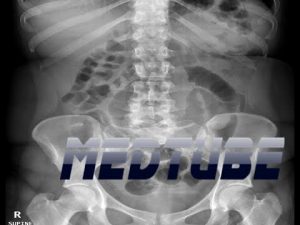Reading Abdominal X-ray is not easy task .Reading abdominal X-Ray is sometime challenging too.

Reading abdominal X-Ray is another common x-ray to read in hospital. Remember mnemonics to read an abdominal X-ray. First simply can remember Gases, Masses, Bones, Stones. A systematic approach to Abdominal xray interpretation is essential to avoid missing significant pathological changes and pathological changes.
steps to Reading abdominal X-Ray
- See ownership, adequacy and technical quality of the film. Name and date of birth of the patient and date radiograph was taken Projection,
- Posture (e.g. supine or erect).
- Then see for the adequacy of exposure
- Look for ‘gases, masses, bones and stones’.
- Gases
- Look for normal or abnormal intraluminal and extraluminal gas distribution. (Note: high inter-observer variability in interpretation of gas patterns)
- Small bowel
- Intraluminal gas is usually minimal, centrally located within numerous tight loops of small diameter (2.5–3.5 cm), distinguished by valvulae conniventes (Stack of coins), characteristic mucosal folds that stretch all the way across the small bowel loops.
- Large bowel
- Has a mixture of gas and faeces located within loops of larger diameter (3–5 cm) around the periphery, with haustra, which are mucosal folds that stretch only part-way across the diameter of the large bowel loops.
Here is video showing Reading abdominal X-Ray
Reading abdominal X-Ray with Abnormal findings include:
- Dilated loops of small or large bowel- obstruction, ileus or inflammation
- Air–fluid levels on erect AXR—more than 5 fluid levels, greater than 2.5 cm in length is abnormal and associated with obstruction, ileus, ischaemia and gastroenteritis.
- Intramural Gas -ischaemic colitis
- Intraperitoneal gas—perforated viscus or penetrating abdominal injury Rigler’s Sign(double-wall sign) occurs when both sides of the bowel wall can be visualised and is a good indication of free intraperitoneal gas. However the sensitivity for detecting perforation on AXR is low and is best confirmed as subdiaphragmatic air on erect CXR or with a CT scan.
- Extraperitoneal gas—within the soft tissues, retroperitoneal structures or chest in infection or trauma.
- Masses
- Look for the size and position of the solid organ shadows of the liver, spleen, kidneys and bladder
- Identify the retroperitoneal shadow of the psoas muscles. Bulging of the lateral margin or obliteration of the psoas shadow may indicate retroperitoneal pathology. Look for the dilated, calcified sac of a ruptured aortic aneurysm, or adjacent bony trauma (e.g. transverse process fractures).
- Bones
- Look for abnormalities of the visible bones such as the ribs, spine, sacrum and pelvis (e.g. fractures, scoliosis, degenerative disease, tumours and metastatic deposition).
- These may be incidental or provide additional information on the cause of the abdominal pain.
- Stones
- Look for renal, ureteric and bladder stones/calcification.
- Trace the course of the ureter from the pelvis of the kidney, along the tips of the lumbar spine transverse processes, over the sacroiliac joint, down to the ischial spine and medially to the bladder; 80–90% of renal tract stones are radio-opaque, but will require non-contrast CT or USS to confirm their position in the ureter.
- Examine the RUQ and transpyloric plane at the level of L1 for evidence of gallstones (15% radio-opaque) or pancreatic calcification. Again, confirmation with USS or CT is indicated.
